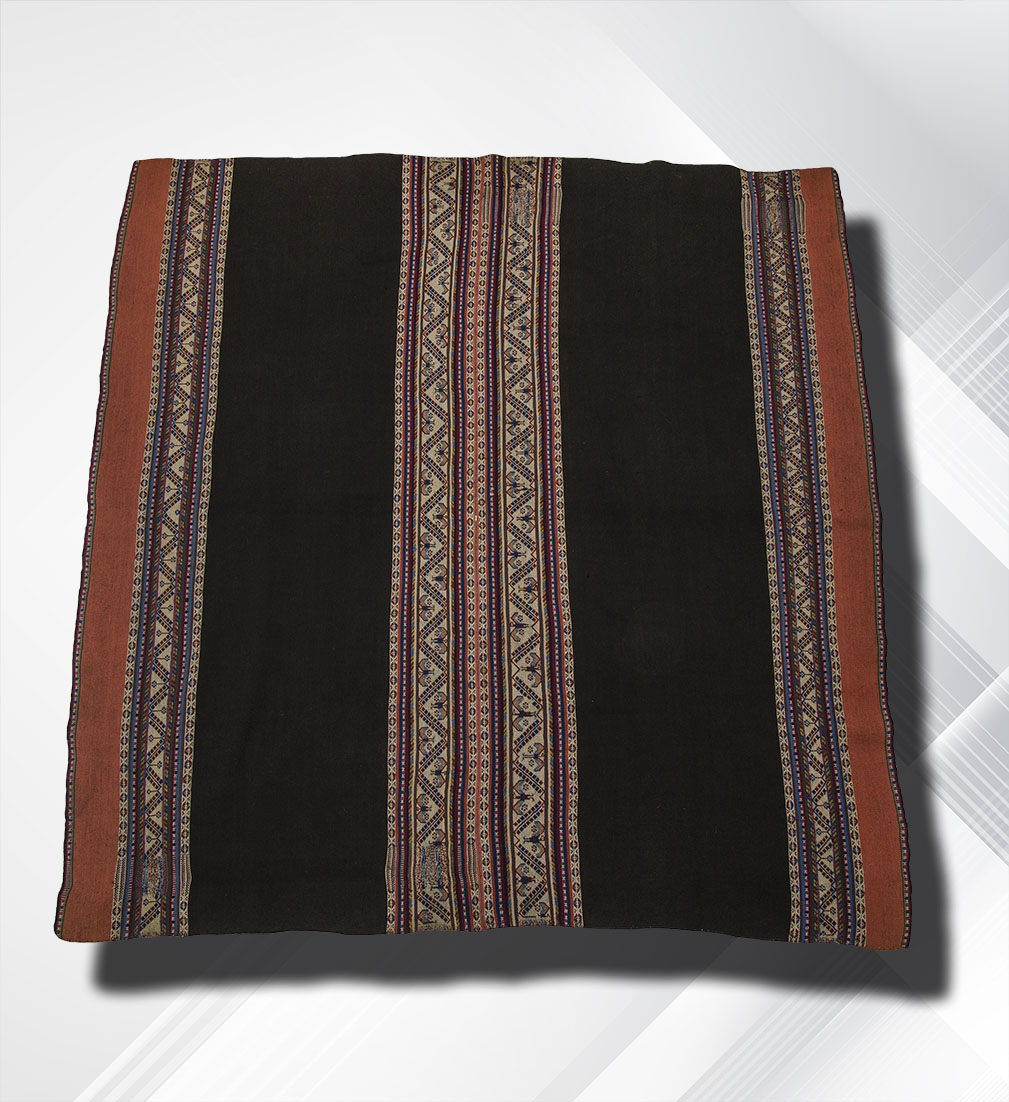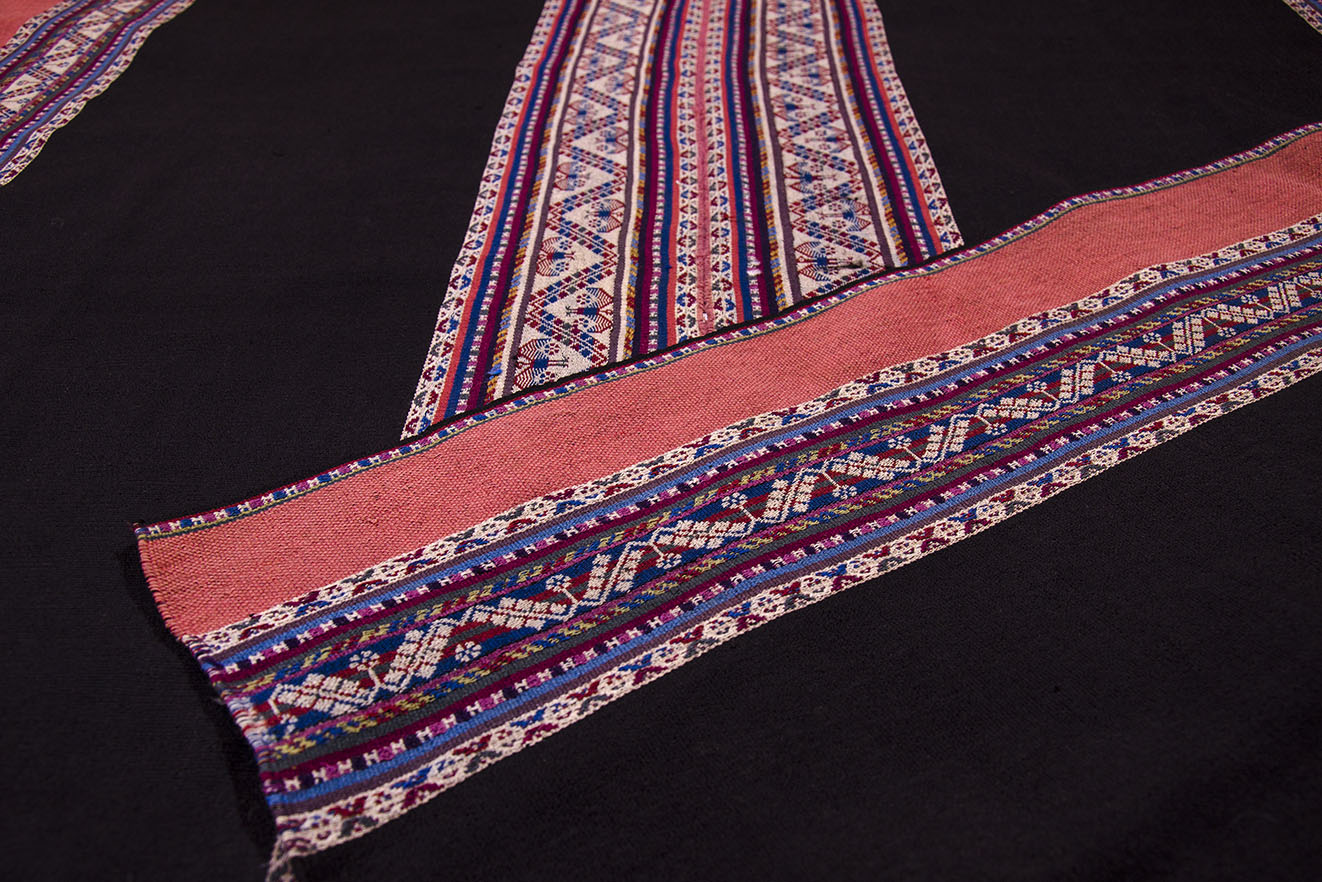BACK TO TOP
TEXTILES
AYMARA CULTURE
Lliclla from Bolivar. Bolivar region. Bolivia. Second half of the XIX century.
Exceptional fabric, for its design, its technical resolution and its state of conservation. It is a piece woven on a stake loom, warp-wise, in two panels with four edges with an ornamental tillage design. The fiber, spun and twisted by hand with a spindle, belongs to the so-called "real" alpacas, raised in the Andean elevations at more than 4,500 meters. To weave the pampa (the field) the black alpaca fiber has been chosen, so that it has not required to be dyed, and the two most precious natural dyes in the textile world have been used for the list and tillage streets: indigo and cochineal grana, despite the fact that when this lliclla was woven, industrial dyes already existed. (1) Measurements. Length: 118.5 cm. Width: 122cm.
The two panels that make it up have been joined by an inapparent seam that produces a visual effect of a single, central, ornamental lane, although in reality they are two mirror-like lanes facing each other, the same width as the lateral ones. The simplicity of the design of these labor streets tells us about the dating of this lliclla, in which the recurrent representation of the zigzag of the Andes and the figure of the Andean condor flying over its summits appear in the central streets, unlike the pieces of the 20th century in which the ornamental motif is dominated by floral designs and other Baroque-inspired figures.
The territory of origin of this beautiful garment, known as Quirquiavi during the colonial period, covers three departments -Cochabamba, Oruro and Potosí-, today belonging to Bolivia. (two)
Without a doubt, this is a magnificent example of high Andean textiles. In the northwestern border region of Argentina, garments made in Bolivian towns circulated with their owners in a traffic that brought together the Creole and native cultures of the entire area. Over the years, those northern settlers emigrated to Buenos Aires, where we found this garment, tributary to the most exalted South American textile tradition.
Notes:
1. The Aniline patent dates back to 1856. Its entry into the South American textile universe greatly simplifies the dyeing task, to the detriment of the piece's quality.
2. Gisbert, Teresa – Arce, Silvia – Cajías, Martha: Textiles in the Bolivian Andes. La Paz, Bolivia, Ed. Bolivian Photo Agency / Quipus Cultural Foundation, 2003, p. 122.
Are you interested in selling some works?
Send us an email briefly indicating
which works you intend to put on sale, and we will respond. click here
Subscribe to our newsletter to be updated.
Check our Newsletters
